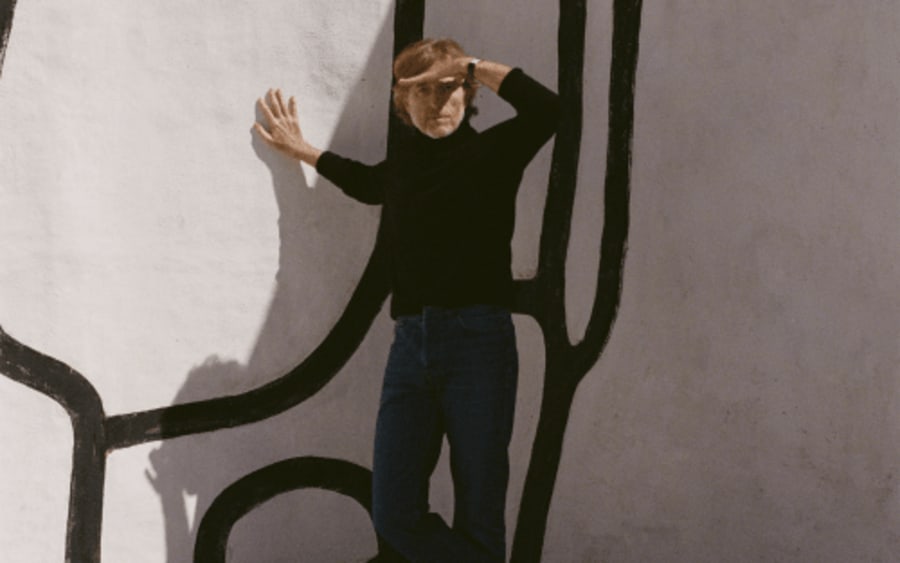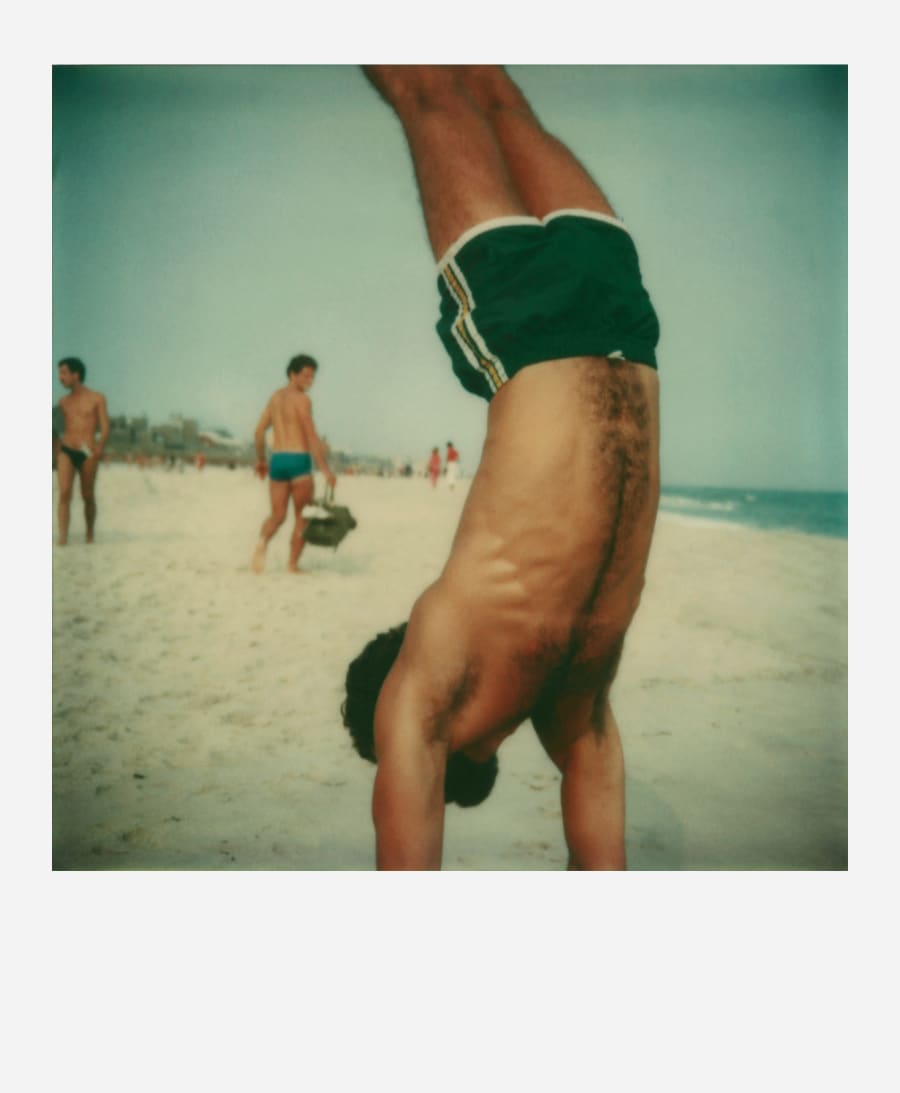Each one in their own way, embodies an idea of design. To prepare for Paris Design Week (September 7-16, 2024), read on to learn more about nine iconic French-born designers.
Charlotte Perriand (1903–1999)
She was 24 when her avant-garde Bar sous le toit (1927) brought her into partnership with Le Corbusier and Pierre Jeanneret. Together they codesigned the Chaise longue B306 (1928/1932), as well as other furniture and fittings reconciling rationalism and Modernism – a principle promoted by the Union des artistes modernes (UAM), cofounded by Perriand in 1929. Ten years later, she was asked to advise on industrial art in Japan. There she was inspired by the Mingei spirit, which gave rise to the Nuage bookcase (1953), an aluminum and wood version of the shelves from the 17th-century Imperial Katsura villa in Kyoto. This desire for modularity and harmony between interior and exterior architecture guided her throughout her life. It reached perfection in Les Arcs ski resort in France, for which she led a collective of architects between 1967 and 1989.
Jean Prouvé (1901–1984)
Like his godfather Émile Gallé, an eminent figure in the Art Nouveau movement, Jean Prouvé based his creative thinking on solid technical knowledge. Initially apprenticed to the best master metalworkers of the day, he soon abandoned forging in favor of state-of-the-art tools, which he acquired for his workshop in Nancy. As early as 1925, his experiments with folded sheet steel opened the way to new forms, including seats with tapered legs and ‘airplane wing’ tables that immediately defined his style. Prouvé’s ingenuity led him to invent one of the very first (if not the first) examples of a curtain wall for the Maison du Peuple in Clichy-La-Garenne (1935-1940), as well as dismantlable porticoed houses, notably for those displaced by World War II, and coveted by collectors today.
Pierre Paulin (1927–2009)
Taking inspiration from the swimsuit, Pierre Paulin began designing his cult armchairs in the late 1950s: the Mushroom, Tongue, Tulip, and Ribbon chairs are all clad in brightly colored, one-piece stretch covers. Structure is overlooked in favor of pure form, their roundness embraces the body, and the living space becomes a landscape. Paulin’s first pieces of furniture, including the self-produced Daybed (1953), borrowed from Scandinavian purity. Then in 1957, he registered his patent for stretch fabric, which he also used to adorn the ceiling in a private room of the Élysée Palace in 1972. In the 1970s, Paulin encouraged a freer art of living, closer to the ground, with his origami-shaped Tapis-Sièges (c. 1980) and undulating seats, Ensemble Dune, which for a long time only existed as prototypes.
Andrée Putman (1925–2013)
She is said to have been inspired by the black and white of piano keys, an instrument at which she excelled, and by the clean lines of the Fontenay Abbey in Burgundy, France, where she spent her summers. Andrée Putman was self-taught, first as an interior design journalist, then as a stylist for the Prisunic stores. In 1971, she founded a concept store where she launched designers such as Jean-Charles de Castelbajac and Thierry Mugler. Seven years later, she began resurrecting design figures of the 1930s, reissuing their forgotten objects and furniture. And in 1984, she reinvented herself again, gaining international renown with the Morgans Hotel in New York, whose checkerboard bathrooms would forever encapsulate the sober Putman style.
Claude (1925–2019) and François-Xavier (1927–2008) Lalanne – a breath of creativity
With their hybrid objects – half sculpture, half furniture – Les Lalanne, together and separately, created a deeply original body of work inspired by nature. In 1964, at their first Paris show, François-Xavier presented the brass Rhinocrétaire I, and Claude her series, Choupatte – cabbage-shaped sculptures supported by two chicken feet. François-Xavier went on to create an astonishing array of beasts, such as the Hippopotamus that encased bathroom fittings, the Baboon housing a chimney, a bar in the form of a grasshopper, and woolen sheep to sit on. Claude’s interest in botany on the other hand is reflected in her Gingko furniture. For Yves Saint-Laurent, one of their clients, François-Xavier created the Bar YSL in 1965, and in 1974, Claude began her series of large mirrors with frames in the form of plants for the music room of the couturier’s legendary apartment on rue de Babylone.
Philippe Starck (b. 1949)
An inveterate creative who became a star in the 1980s, Philippe Starck is a jack-of-all-trades. He was hired at the age of 20 by Pierre Cardin as artistic director of his publishing house, but the whimsical designer soon went his own way, decorating legendary clubs and cafés from 1976 onward including Les Bains Douches and Café Costes in Paris, the Starck Club in Dallas, as well as François Mitterrand’s private apartments at the Elysée Palace in 1983. This was followed by hundreds of international architectural projects – the Nani Nani buildings in Tokyo (1989); Le Nuage in Montpellier (2014); the renovation of the Delano hotel in Miami (1994); the Mama Shelter hotel-restaurant chain (2008-), etc.) – as well as the design of mega-yachts. It is above all his ‘democratic design’, often tinged with humor, that has made him popular: sculptural toothbrushes (Brosse à dent et son socle, Fluocaril, 1987); the build-your-own-house kit (Maison Starck, 1994) featured in the catalogue for French mail order company, 3 Suisses; the Juicy Salif citrus reamer (1988); the Louis Ghost chair (2000); and Aeklys by Starck (2017), a smart multifunctional ring.
matali crasset (b. 1965)
The playful shapes of matali crasset (all lower case) express a philosophy of living together. Going against bourgeois excess, her designs are lively, evolving, and colorful – they reflect life itself. In 1991, with her Trilogie domestique (three light, heat, and water diffusers) she adopted a poetic approach to technology. Four years later, Quand Jim monte à Paris (1995), a ‘hospitality tower’ comprising a folding bed, lamp, and alarm clock, inaugurated a range of personalized objects known as ‘les amis de matali’. Opposed to the ‘dictatorship of the object,’ matali, who defines herself as a ‘designereuse’ (or ‘happy designer’), creates transformable furniture, epitomized by Permis de construire (2000), a sofa which converts into a construction game. With each of her boldly designed projects, she breaks codes and invites us to form a community: a spirit one can witness at the Maisons Sylvestres for the Vent des Forêts art center in Fresnes-au-Mont; the Le Blé en herbe school in Trébédan in Brittany; and the Dar HI ecological house in Nefta, Tunisia.
Mathieu Lehanneur (b. 1974)
With his design for the Olympic torch and cauldron for Paris 2024 and the partial reopening of the Grand Palais in Paris, on whose redevelopment he has been working for the past ten years, Mathieu Lehanneur has the wind in his sails. Indeed, in 2024, he was named Designer of the Year by the Maison&Objet trade show. Back in 2001, the man who hesitated between studying medicine and fine art designed his Objets thérapeutiques, which were immediately integrated into the permanent collection of the Museum of Modern Art in New York. Lehanneur’s preoccupation with health and care finds further application in his plant-filtered air purifier, Andrea (2009), developed with Harvard University, and his celestial device Demain est un autre jour (2012), conceived for the palliative care unit at the Diaconesses Croix Saint-Simon hospital in Paris. His Liquid Marbles (2016), Ocean Memories tables, benches, and stools (2018), and the Inverted Gravity collection (2019), of marble elements floating on glass bubbles, are all already among his classics.
Marie-Émilie Fourneaux is a writer based in Paris.
Caption for header image: Ensemble Dune, Château La Coste. © Stephane Aboudaram. Courtesy of Paulin Paulin Paulin.
English translation: Art Basel.
Published on August 29, 2024.


